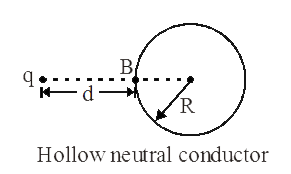In the figure shown, forces of equal magnitude are applied to the two ends of a uniform rod. Consider A as the cross-sectional area of the rod. For this situation, mark out the incorrect statements.

The rod is in compressive stress.
The numerical value of stress developed in the rod is equal to F/A.
The stress is defined as internal force developed at any cross section per unit area.
none of these
The correct Answer is:D
All of the statements are factual statements. Stress is defined as internal force developed in the system per unit cross sectional area and is not defined as force applied per unit corss section section area although in equilibrium, stress is numerically equal to applied for per unit area.
Topper's Solved these Questions
- BOOK - CENGAGE PHYSICSCHAPTER - PROPERTIES OF SOLIDS AND FLUIDSEXERCISE - Multiple Correct17videos
PROPERTIES OF SOLIDS AND FLUIDS
- BOOK - CENGAGE PHYSICSCHAPTER - PROPERTIES OF SOLIDS AND FLUIDSEXERCISE - Assertion- Reasoning13videos
PROPERTIES OF SOLIDS AND FLUIDS
- BOOK - CENGAGE PHYSICSCHAPTER - PROPERTIES OF SOLIDS AND FLUIDSEXERCISE - Subjective16videos
PROPERTIES OF SOLIDS AND FLUIDS
- BOOK - CENGAGE PHYSICSCHAPTER - NEWTON'S LAWS OF MOTION 2EXERCISE - Integer type1videos
NEWTON'S LAWS OF MOTION 2
- BOOK - CENGAGE PHYSICSCHAPTER - RIGID BODY DYNAMICS 1EXERCISE - Integer11videos
RIGID BODY DYNAMICS 1
Similar Questions
Knowledge Check
- Question 1 - Select One
Consider a capacitor as shown in figure. If we pull the plates of capacitor apart to a final position as shown in figure, then we must perform some work against the electric force. For this situation, mark out the correct statements.
 AWork done is Q2(d2−d1)/2ε0A and is stored in volume A(d2−d1).BWork done is +Q2(d2−d1)/2ε0A and is stored in volume Ad2.CWork done is +ε0AV2(d2−d1)/2d1d2 and is stored in volume Ad2.DWork done is ε0AV2(d2−d1)/2d1d2 and is stored in volume Ad2.
AWork done is Q2(d2−d1)/2ε0A and is stored in volume A(d2−d1).BWork done is +Q2(d2−d1)/2ε0A and is stored in volume Ad2.CWork done is +ε0AV2(d2−d1)/2d1d2 and is stored in volume Ad2.DWork done is ε0AV2(d2−d1)/2d1d2 and is stored in volume Ad2. - Question 2 - Select One
Two equal and opposite point forces applied at mid- points of the ends of a rod of square cross shown. Consider the dotted section ABCD. If the rod is cut across this Gloss section, the force exerted by the right part of the rod on left part across this cross section is
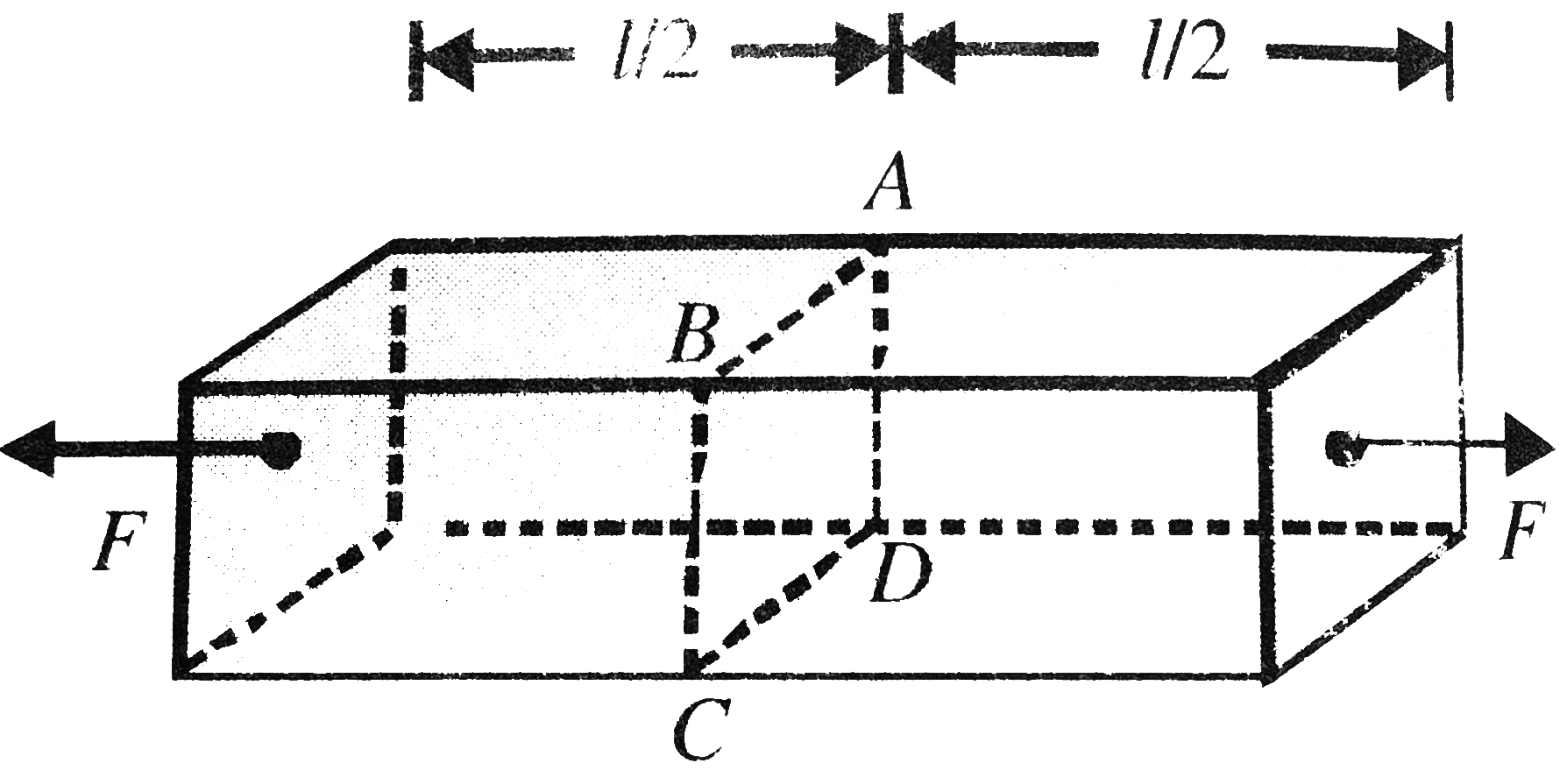 Aacting at point passing through cross section acting at point passing through cross section ABCDBacting at a point but not passing through the centre of cross section ABCDCuniformly distributed across the cross section ABCDDnon-uniformly distributed across the cross section ABCD
Aacting at point passing through cross section acting at point passing through cross section ABCDBacting at a point but not passing through the centre of cross section ABCDCuniformly distributed across the cross section ABCDDnon-uniformly distributed across the cross section ABCD - Question 3 - Select One
A uniform cylindrical rod of length L and cross-sectional area by forces as shown in figure.
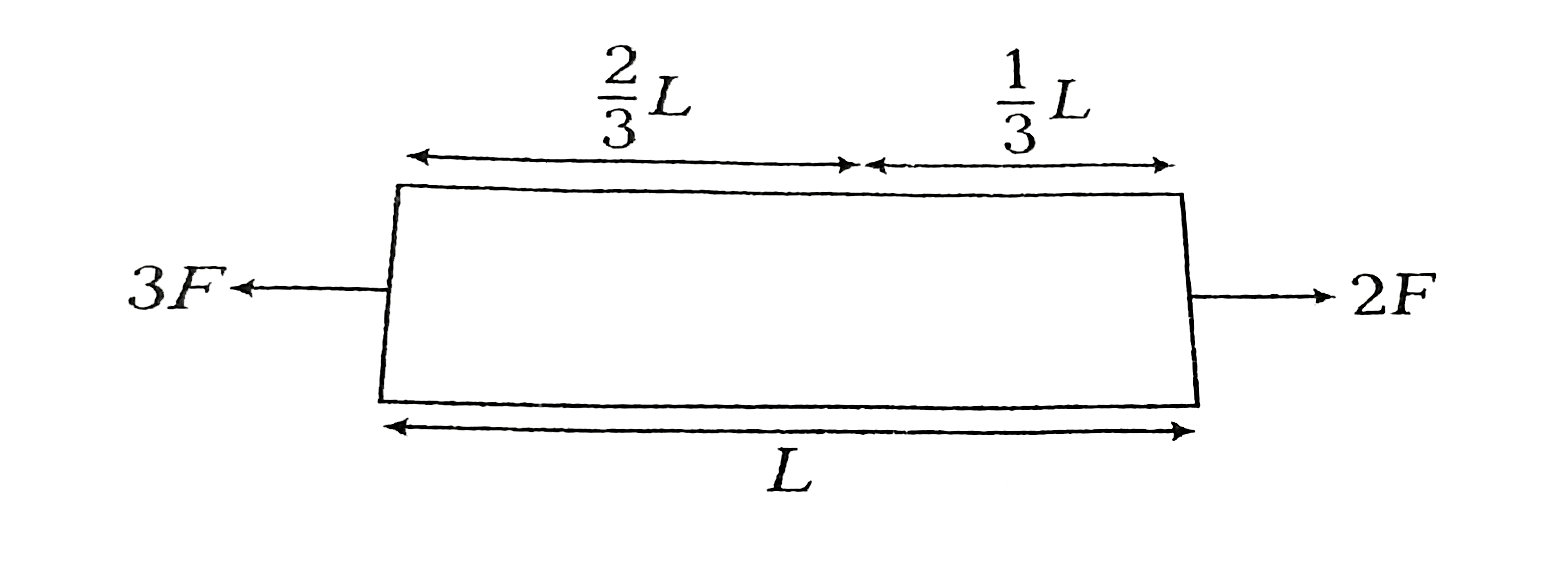
The elongation produced in the rod isA3FL8AYB3FL5AYC8FL3AYD5FL3AY
Two equal and opposite forces F and −F act on a rod of unifrom cross-sectional ara A, as shown in the figure. Find the (i) shearing (ii) longitual stress on the section AB.
 View Solution
View SolutionTwo forces F1 and F2(F2>F1) are applied at the free ends of uniform rod kept on a horizontal frictionless surface. Find tension in rod at a distance x from end ‘A’,
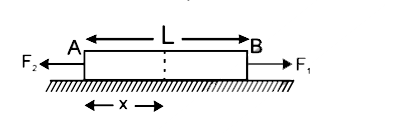 View Solution
View SolutionA compressive force is applied to a uniform rod of rectangular cross-section so that its length decreases by 1%. If the Poisson's ratio for the material of the rod be 0.2, which of the following statements is correct? "The volume approximately …
View SolutionTwo forces F1 and F2 are applied at the ends of a metal rod of Yougn's Modulus Y, length l as shown.
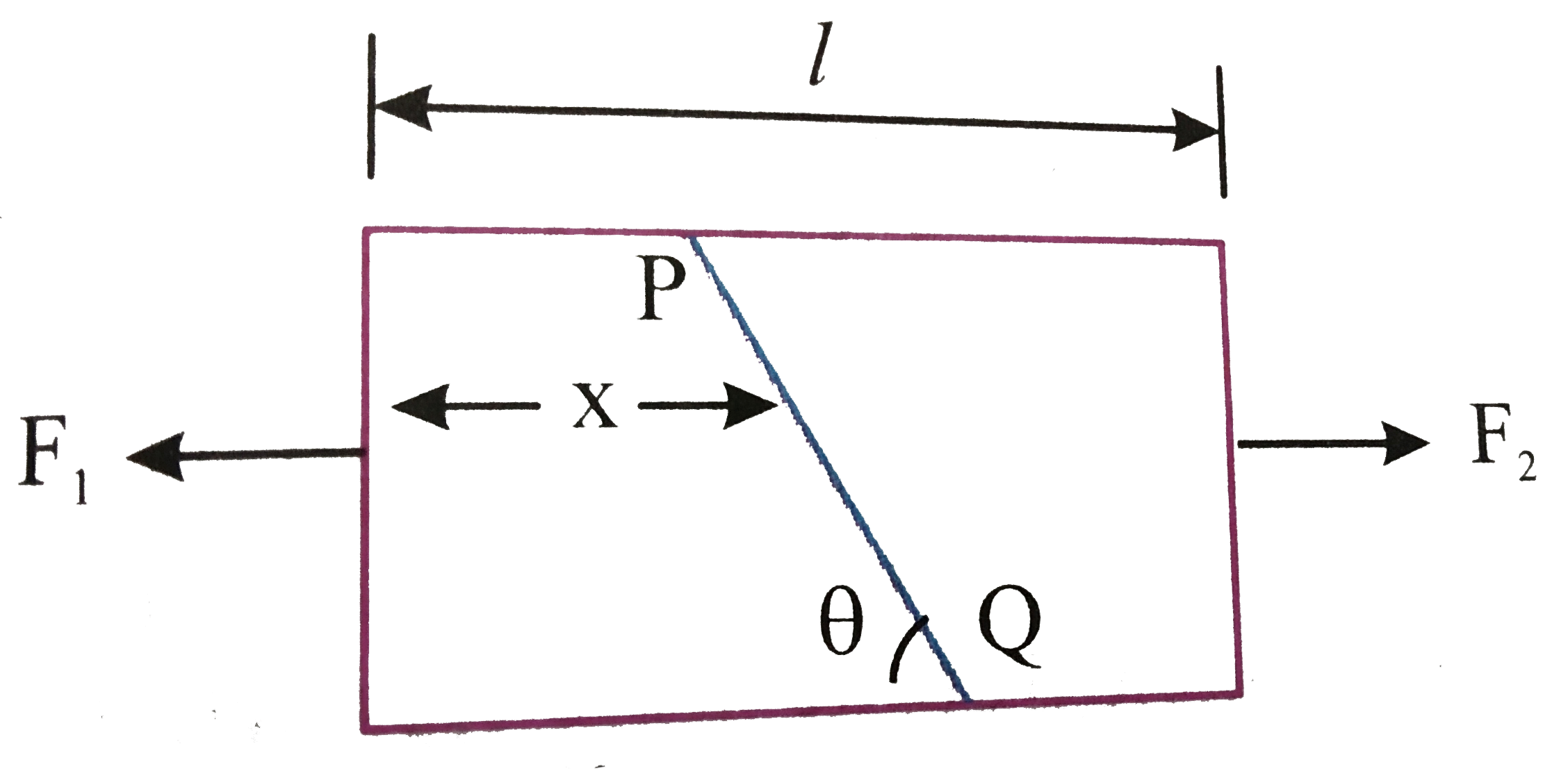
Longitudinal stress at the given cross-section PQ if the cross-section of the rod is A0 and tension is TView SolutionTwo rods of length l and 2l thermal conductivities 2K and K are connected end to end. If cross sectional areas of two rods are eual, then equivalent thermal conductivity of the system is .
View Solution


